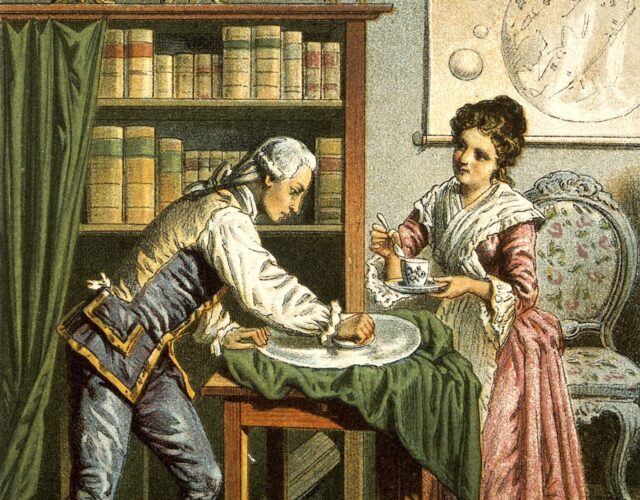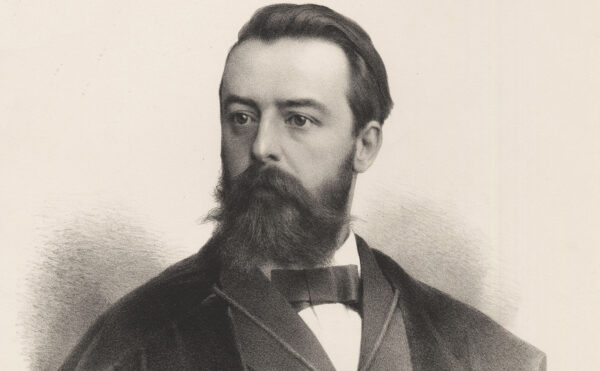Sometimes a picture is worth more than a thousand words: it’s worth a thousand stories. The recent New York Times piece about the first successful imaging of a black hole highlights the technology that went into making that picture possible: eight radio telescopes scattered around the world were synced together, making them able to see far better than with a single telescope. These images were then combined into the final picture with the help of code developed by a team that included postdoctoral research fellow Kate Bouman. Her surprised and delighted reaction on seeing the black hole went viral along with the image itself. Then sexist trolls began to attack Bouman and minimize her work. It’s disheartening to know that even in the 21st century, women scientists are still treated very differently than their male counterparts.
We have a long history of idolizing men who looked to the heavens to help us understand the universe. Take Isaac Newton, for example, a man who did not lack ego and who is often presented as a lone genius. But even he wrote, “If I have seen further, it is by standing upon the shoulders of giants.”
Newton built telescopes, as did Galileo, who used his to discover four moons of Jupiter, a potentially unsettling discovery in a cosmos in which everything revolved around the earth. Telescopes, which first appeared in the early 17th century, quickly became our artificial eyes, showing us what our senses couldn’t. Several decades later and in part using the telescope observations of others, Newton, proposed his theory of a “clockwork” universe governed by the God-given laws of gravity.
As telescope lenses improved, the universe people saw grew larger and more complicated. In the 18th century brother-and-sister team William and Caroline Herschel built their own telescopes and used them to discover comets and the planet Uranus. William Herschel went on to develop the idea of “island universes,” theorizing that our own Milky Way was just one “island” among many. In 1923 Edwin Hubble proved him right when he turned what was then the world’s most powerful telescope to the Great Andromeda Nebula and showed that it lay beyond the Milky Way. Only then did Herschel’s “island universes,” or galaxies, become part of our understanding of the universe. Hubble’s discovery, in turn, relied on the earlier work of Henrietta Leavitt.
A few years later Hubble went on to show that the universe was expanding, and soon others began to speculate about its beginnings. In The 4% Universe: Dark Matter, Dark Energy and the Race to Discover the Rest of Reality, Richard Panek describes how scientists in the 20th and 21st centuries have been rewriting the history and future of the universe, like a story that keeps being edited—a different beginning, a changed ending.
But now the ending is getting darker. Why? It’s all thanks to some dark discoveries.
The discovery of dark matter, which can’t be seen but is known to exist because of its gravitational force, is in part due to one of my favorite scientists in Panek’s book: Vera Rubin. She and her colleague, Kent Ford, found that stars at the edge of galaxies were moving just as fast as stars close to the center, when they should have been much slower. These outer stars were moving fast enough to escape their galaxy’s gravity. Except they weren’t escaping: some kind of unseeable matter was holding them in place. This unseeable “dark matter” once again changed our understanding of the universe.
Rubin started her career in the 1950s and seems to have been impervious to the opinions of others. At the very least she refused to let them influence her. When her son was one month old and she had a paper to present, a professor told her he would present it for her at the conference, but under his own name. Although she didn’t yet have a doctorate, she refused the offer, took her paper and her son to the conference, and presented her odd and not-well received idea that the universe was rotating. Then, pregnant with her second child, she started a doctorate in astronomy. After graduating and teaching for a few years, she and Ford began the work that led to the recognition of dark matter. Like most research and discovery, it was built on the shoulders of others, in this case work done in the 1930s by Fritz Zwicky.
Scientists used to think that the gravitational force of visible and dark matter would slow down the expansion of the universe. But in 1998, a telescope named after Hubble disproved that notion. Now scientists believe that dark energy, which functions like negative gravity, or antigravity, will push galaxies apart at an ever-increasing rate, until not even light from other galaxies will be moving fast enough to reach us. At some point in the far future, no telescopes will be able to see the black hole Bouman and her colleagues made visible.
Like Newton, Bouman stands on the shoulders of giants—including women scientists such as Vera Rubin and others who came before her. But women scientists of the past were not often recognized or remembered for their work. Caroline Herschel was one of the first women I know of to be given a salary for her astronomical work and widely recognized for it. Unfortunately, that did not turn into a trend. In Britain science only became a profession in the second half of the 19th century and until then few people doing science earned their living from it. Women, often family members of male scientific practitioners, could contribute their skills and talents, but they remained mostly invisible to the outside world. One rare exception during this period was Mary Somerville, who was widely acknowledged for her mathematical abilities. (She was even given a government pension for her work on celestial mechanics.) Even so, a male scientific friend said of Somerville that had her husband been a mathematician rather than a doctor, her work would have appeared under his name and the world would never have heard of Mary Somerville. His reasoning: “A man may desire fame, reputation, and even glory, for the sake of sharing it with the one he loves. A woman cannot share it with her husband, it will be the utmost she can do not to make him of less importance by it.”
But by the late 19th century, as science became a paid profession and the term scientist came into widespread use, women, with rare exceptions, were excluded. Barriers slowly dropped in the 20th century, but even today discrimination remains. Less than 10 years ago Meghan Sullivan reported that women are still disproportionately left out of science. While blatant discrimination, such as that suffered by Rubin, has faded, other problems remain: “Women’s academic careers progress more slowly and they are less like to be hired into academic positions, [and] they are less likely to get tenured.” Women scientists are also less likely to receive the funding necessary for their work. In March 2019 Andrew Jacobs reported that, at least when it comes to funding by the National Institutes of Health, men tend to receive bigger grants than women.
Rather than overt discrimination, the 21st century version seems more a matter of unconscious bias. Sullivan writes that, “studies have repeatedly and consistently shown that work associated with a woman’s name is not rated as well as work of equal quality associated with a man’s name.”
Unfortunately, it seems that no amount of scientific research is enough to get rid of bias within the world of science. Despite such road blocks, women will continue to help us understand our mysterious, expanding universe, following in the footsteps of Caroline Herschel, Mary Somerville, Henrietta Leavitt, Vera Rubin, Kate Bouman, and many others.




